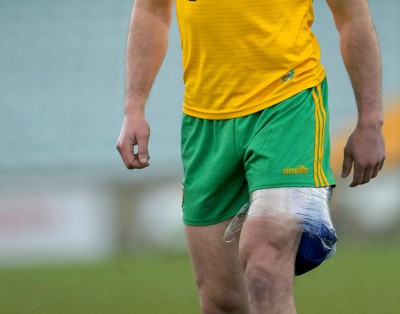HAMSTRING injuries are one of the most frustrating and common issues in Gaelic football.
Whether you’re a player, coach, or physio, you’ve likely seen first-hand how they can ruin seasons, stall progress, and keep lads off the pitch when they’re needed most.
Thankfully, with the right approach, we can reduce their frequency and severity.
Why are hamstrings so prone to injury?
In Gaelic football, sprinting, decelerating, jumping, and kicking place huge demands on the hamstrings, especially during high-speed efforts like breaking from a marker or chasing down a ball.
Research shows that most hamstring injuries happen during the late swing phase of sprinting, when the muscle is rapidly lengthening under load. If that tissue isn’t ready for the stress, it breaks down.
To make matters worse, the biggest predictor of a future hamstring injury is a previous hamstring injury. Re-injuries often happen when players return to full pace too quickly, before the hamstring has fully healed or regained strength.
Common mistakes in rehab
Many rehab plans focus on gym-based strength (like hamstring curls or bridges), which is important, but these exercises don’t fully replicate the loads experienced during a full sprint.
If players skip proper sprint drills in their return-to-play (RTP) plan, they’re often underprepared for match intensity.
In one elite sprinter’s case, after multiple hamstring tears, it became clear that the previous rehab hadn’t adequately prepared him for the demands of high-speed running. His injury re-occurred while sprinting at max effort, and follow-up scans showed a tear in nearly the same place as before.
This is a lesson for GAA too. Without proper sprint exposure in rehab, especially at speeds over 90-95 per cent of max effort, we’re sending players back into games with a ticking time bomb.
How do we reduce the risk?
1. Sprint Exposure: Players should hit near-max speeds (90–100 per cent) once or twice a week in-season and in pre-season. It builds resilience and prepares the hamstrings for match conditions.
2.Movement Screening: Assess athletes for weaknesses or imbalances, like limited ankle mobility, poor trunk stability, or adductor weakness. All of these can overload the hamstrings during sprinting.3. Strength Work with a Sprint Focus: Exercises should target both the inner and outer hamstring muscles, especially the biceps femoris long head, which is often where injuries occur. Add resistance work with focus on hip extension, Nordic curls, and eccentric loading. Bias towards lateral hamstrings when needed.
4. Progressive Return-to-Play: Don’t rush it. Tendons, in particular, take months to fully heal and mature. A phased RTP plan should rebuild strength, restore sprint mechanics, and address any lingering issues.
5. Integrated Rehab: Physios, coaches, and S&C staff must work together. Every aspect, strength, sprint mechanics, running load, and rehab milestones, needs to be aligned.
Final word
Hamstring injuries aren’t going away in Gaelic football, but we can do a lot to prevent them.
It starts with respecting the demands of the game, addressing past injuries properly, and building athletes who are strong, fast, and well-prepared for the pitch.
It’s not just about getting a player back, it’s about keeping them there.
Gaelic Athletic AcademyShane Rice
Receive quality journalism wherever you are, on any device. Keep up to date from the comfort of your own home with a digital subscription.
Any time | Any place | Anywhere















